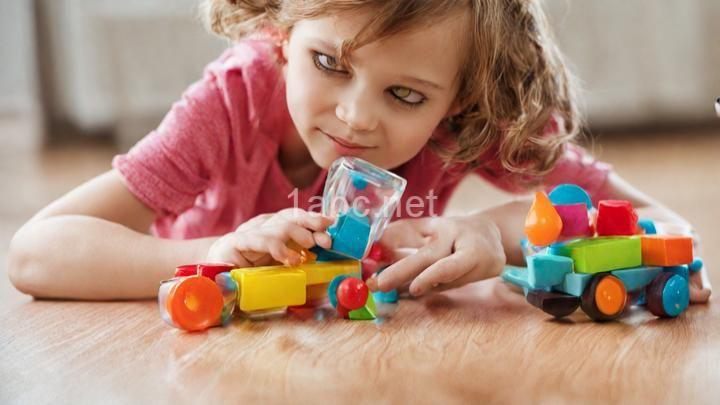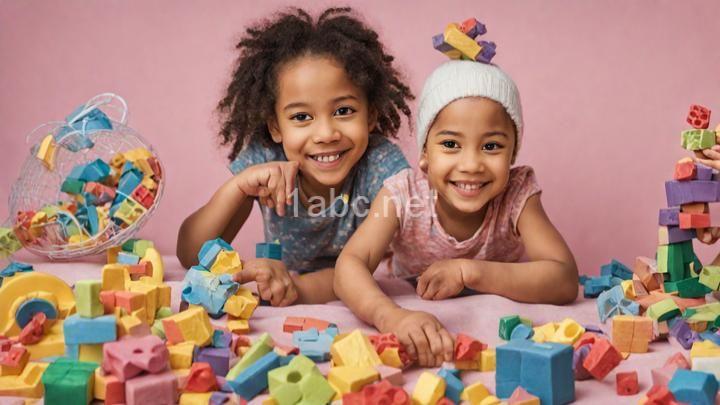Educational vs. Entertainment Toys: Finding the Perfect Balance

Introduction:
Are you struggling to find the right balance between educational and entertainment toys for your child? In a world where children are constantly bombarded with screens and digital devices, finding a way to engage them in meaningful play can be challenging. In this blog post, we will explore the benefits of both educational and entertainment toys and provide tips on finding the perfect balance. By understanding the advantages of each type of toy and how they can complement each other, you can create a playtime routine that promotes your child's holistic development.
Section 1: The Benefits of Educational Toys
Educational toys play a crucial role in promoting cognitive development in children. They provide opportunities for critical thinking, problem-solving, and creativity. For example, building blocks can enhance spatial awareness and fine motor skills, while puzzles encourage logical reasoning and spatial reasoning. These toys not only stimulate a child's mind but also foster a love for learning. By engaging in play that is both fun and educational, children develop a positive attitude towards learning that can have a lasting impact on their academic journey.
Section 2: The Importance of Entertainment Toys
While educational toys focus on cognitive development, entertainment toys play a vital role in promoting social skills and emotional development. These toys encourage children to use their imagination, engage in role-playing, and cooperate with others. For instance, dolls and action figures can be used to create narratives and encourage empathy and communication skills. Outdoor toys like bicycles and sports equipment promote physical activity and help children develop gross motor skills. By incorporating entertainment toys into playtime, children learn important social skills such as sharing, taking turns, and resolving conflicts.
Section 3: Striking a Balance
Both educational and entertainment toys have unique benefits, and it is crucial to incorporate both into your child's playtime routine. Striking a balance allows your child to experience the best of both worlds. To find the perfect balance, consider selecting age-appropriate toys that combine fun with learning opportunities. Look for toys that align with your child's interests and preferences while also providing educational value. For example, if your child loves animals, consider getting them a puzzle set that features different animal species. Additionally, diversify your toy collection to cater to different developmental needs. This way, your child can engage in a variety of activities that promote cognitive, social, and emotional growth.
Section 4: Playtime Tips for Parents
As a parent, you play a crucial role in fostering a balanced play environment at home. Engage in interactive play with your child using both educational and entertainment toys. This not only strengthens your bond but also provides an opportunity for guided learning. For example, if you're playing with building blocks, encourage your child to explore different shapes and sizes or create patterns. Incorporate learning activities into everyday play experiences, such as counting the number of blocks or discussing the colors and textures of different toys. By actively participating in your child's playtime, you can enhance their learning experience and make it more enjoyable.
Conclusion:
Finding the perfect balance between educational and entertainment toys is key to supporting your child's holistic development. Educational toys stimulate cognitive skills, promote critical thinking, and foster a love for learning. On the other hand, entertainment toys encourage social skills, emotional development, and imaginative play. By incorporating both types of toys into your child's playtime routine, you can create a well-rounded environment that promotes their overall growth. Remember, it's important to embrace diversity in your child's toy selection while prioritizing both fun and learning. With these tips and insights, you can make informed decisions when choosing toys that will engage, educate, and entertain your little one. Happy playtime!
FREQUENTLY ASKED QUESTIONS
What is the importance of finding a balance between educational and entertainment toys?
Finding a balance between educational and entertainment toys is crucial for children's development. It is essential to recognize that play is not just about having fun, but also about learning and acquiring new skills.Educational toys provide valuable opportunities for children to engage in meaningful learning experiences. They can enhance cognitive abilities, such as problem-solving, critical thinking, and creativity. These toys often focus on specific subjects, such as math, science, or language, allowing children to explore and develop a deeper understanding of these areas.
On the other hand, entertainment toys play a vital role in fostering imagination, social skills, and emotional development. They encourage pretend play, which helps children develop their communication and social interaction skills. These toys often involve storytelling, role-playing, and cooperative play, allowing children to express themselves, build relationships, and understand different perspectives.
By striking a balance between educational and entertainment toys, children can experience the best of both worlds. They can have fun while learning and developing important skills. This balance ensures that children are engaged and motivated to learn, making the educational process more enjoyable and effective.
It is important to note that each child is unique, and their interests and learning styles may vary. Therefore, finding a balance involves understanding and catering to individual needs and preferences. Observing children's play preferences and providing a variety of toys that offer both educational and entertainment value can help nurture their overall development.
In summary, finding a balance between educational and entertainment toys is vital for children's holistic development. It allows them to learn and acquire new skills while enjoying the process. By providing a variety of toys that cater to their interests and needs, we can support their growth and encourage a love for learning.
How do I know if a toy is educational?
When determining if a toy is educational, there are a few key factors to consider. Firstly, look for toys that promote skill development or learning in a specific area, such as language, math, problem-solving, creativity, or fine motor skills. These toys often have educational labels or descriptions that highlight their learning benefits.Additionally, consider the toy's age appropriateness. Educational toys are designed to align with a child's developmental stage and provide appropriate challenges. Look for age recommendations on the packaging or product description to ensure the toy is suitable for your child's learning needs.
Another aspect to consider is the toy's play value. Educational toys should encourage active engagement and exploration, allowing children to learn through hands-on experiences. Look for toys that promote open-ended play, where children can use their imagination and creativity to discover and problem-solve.
Furthermore, consider the quality and durability of the toy. Educational toys should be well-made and able to withstand rigorous play. Look for toys made from safe and non-toxic materials, as well as those that are easy to clean and maintain.
Lastly, read reviews and seek recommendations from other parents or educational experts. Their experiences and insights can provide valuable guidance in determining if a toy is truly educational.
By considering these factors, you can make an informed decision and choose toys that not only entertain but also foster your child's learning and development.
How can I make learning fun for my child?
Making learning fun for your child can be an exciting and rewarding experience. Here are some tips to help you create an engaging and enjoyable learning environment:
-
Incorporate hands-on activities: Children learn best when they can actively engage with their environment. Try using manipulatives, art supplies, or even everyday objects to make learning more interactive. For example, use building blocks to teach math concepts or create a scavenger hunt for a history lesson.
-
Gamify the learning process: Turn learning into a game by creating challenges or competitions. You can use educational apps, board games, or even DIY activities to make learning feel like playtime. This not only boosts motivation but also helps develop critical thinking and problem-solving skills.
-
Use multimedia resources: Nowadays, there is a vast array of educational videos, podcasts, and interactive websites available. Take advantage of these resources to make learning more engaging and captivating. Whether it's watching educational videos together or listening to an educational podcast during car rides, multimedia can bring subjects to life.
-
Connect learning to real-life situations: Help your child see the practical applications of what they are learning. For instance, if they're studying fractions, you can involve them in cooking or baking activities where they can see how fractions are used in measuring ingredients.
-
Encourage curiosity and exploration: Foster your child's natural curiosity by allowing them to explore topics that interest them. Provide them with books, documentaries, and online articles related to their interests. This not only makes learning more enjoyable but also encourages independent learning.
-
Make learning social: Learning doesn't have to be a solitary activity. Encourage your child to collaborate with friends or siblings on projects or assignments. This can promote teamwork, communication skills, and make the learning process more enjoyable.
-
Celebrate achievements: Recognize and celebrate your child's progress and achievements. This could be through praise, rewards, or even a small celebration. Positive reinforcement encourages a love for learning and motivates your child to continue their educational journey.
Remember, each child is unique, so tailor your approach to their interests and learning style. With a little creativity and enthusiasm, you can make learning a fun and exciting adventure for your child.
Are all entertainment toys bad for learning?
Entertainment toys can vary in their impact on learning, so it's not accurate to say that all of them are bad for learning. While some entertainment toys may not have direct educational benefits, they can still provide important opportunities for learning through play. Play is a crucial aspect of a child's development, as it helps them develop a range of skills such as problem-solving, creativity, and social interaction.There are also many entertainment toys available that are specifically designed to be educational. These toys can engage children in activities that promote learning in areas like math, science, language, and critical thinking. For example, there are interactive toys that teach coding concepts or puzzles that enhance logical reasoning.
However, it's important to strike a balance between entertainment toys and other educational activities. A well-rounded approach that includes a mix of educational toys, books, hands-on activities, and real-world experiences can provide a more comprehensive learning experience for children.
Ultimately, the impact of entertainment toys on learning depends on various factors, including the specific toy, how it is used, and the child's individual interests and needs. It's essential for parents and caregivers to be mindful of the types of toys they provide and to actively engage with children during play to maximize the learning potential.
